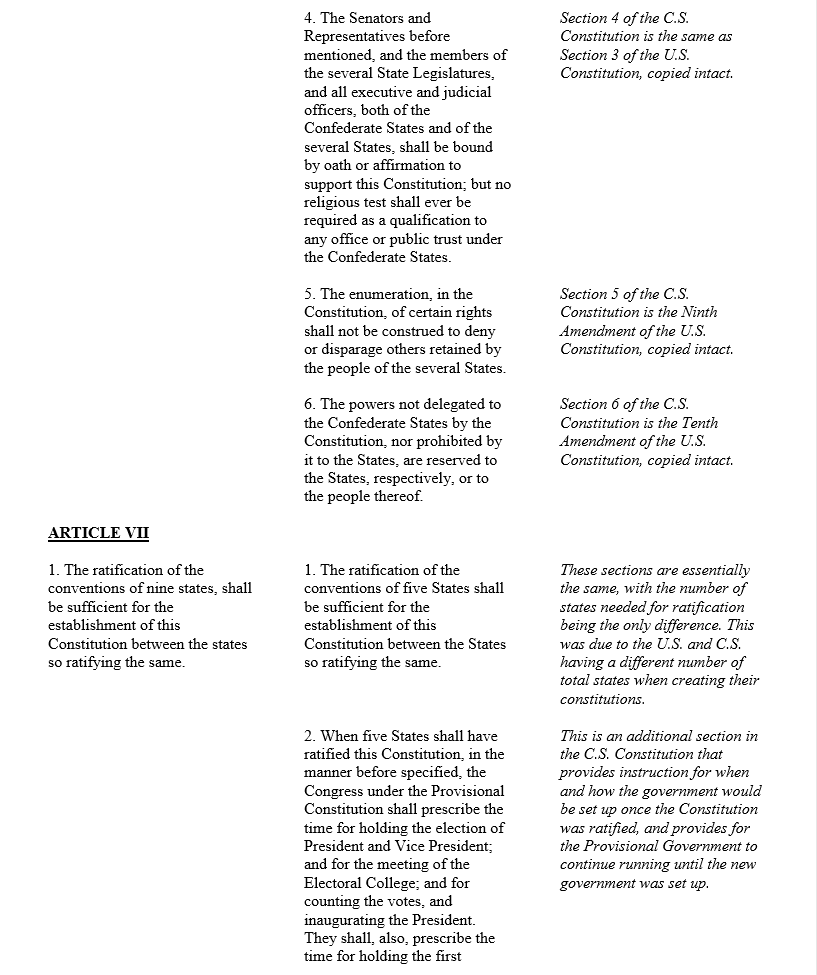Constitutions of the United States and Confederate States: A Comparison
/When the southern states seceded from the United States in 1860 and 1861, they conceived themselves as a new nation, the Confederate States of America. While they were breaking away from the Union, they saw themselves as continuing the tradition of the Founding Fathers. Many southerners believed that the northern states had strayed away from the original intent of the Constitution and had failed to uphold the protections contained within it, especially the right to property. When the new Confederate States came together to form a constitution, they based it on the U.S. Constitution with some revisions it to account for amendments, legislation, and events that had happened since the first document was written. They also added sections and language that specifically protected the institution of slavery.
In the document comparison below, the U.S. Constitution is in the first column, the C.S. Constitution is in the second column, and commentary is in the third column.
Dr. Kathleen Logothetis Thompson earned her PhD in Nineteenth Century/Civil War America from West Virginia University, and also holds a M.A. from WVU and a B.A. from Siena College. Her research is on mental trauma and coping among Union soldiers and she is currently working on her first book, tentatively titled War on the Mind. She currently teaches history at several colleges and universities and leads tours of Frank Lloyd Wright’s Fallingwater. Kathleen was a seasonal interpreter at Fredericksburg & Spotsylvania National Military Park for several years and is the co-editor of Civil Discourse.

































